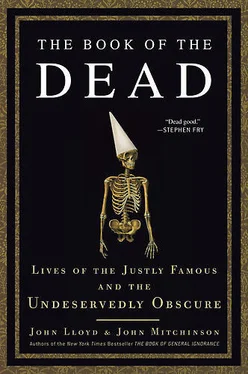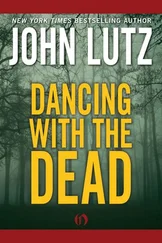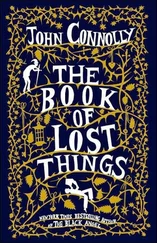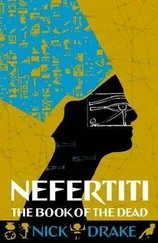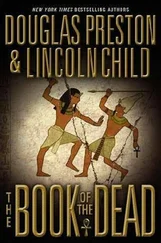My picture is everywhere, on the lids of snuff boxes, on rings, busts. The numbers sold are incredible. My portrait is a best seller, you have prints, and copies of prints and copies of copies spread everywhere. Your father’s face is now as well known as the man in the moon.
He was also—despite being old, bald, and fat—very popular with the ladies. Although, as a younger man, he did admit to at least one illegitimate child (his son William), he probably wasn’t as much of an old goat as some have painted him. He certainly liked women—and had an uncanny ability to write as though he were one (as his many female pseudonyms show)—though most of his amorous liaisons seem to have been intimate but not sexual friendships, usually with him in the role of mentor. Which isn’t to say he didn’t get up to mischief. At one of the endless parties the French threw for him, a young woman patted his portly belly and remarked, “Dr. Franklin, if this were on a woman, we’d know what to think.” To which he replied, “Half an hour ago, mademoiselle, it was on a woman and now what do you think?” In this vein, when asked by a young male friend for advice in choosing a mistress, Franklin wrote back extolling the virtues of older women. He listed eight good reasons, including:
5. Because… The Face first grows lank and wrinkled; then the Neck; then the Breast and Arms; the lower Parts continuing to the last as plump as ever: So that covering all above with a Basket, and regarding only what is below the Girdle, it is impossible of two Women to know an old from a young one. And as in the dark all Cats are grey, the Pleasure of corporal Enjoyment with an old Woman is at least equal, and frequently superior, every Knack being by Practice capable of Improvement.
His final reason was even more to the point: “They are so grateful!” As always with Franklin, it’s difficult to tell just how serious he was being, but the letter, first discovered in 1881, has done him no harm. In 2003 Time magazine published an article on him titled “Why He Was a Babe Magnet.” Franklin’s more self-deprecating name for himself was “Dr. Fatsides.”
Benjamin Franklin—scientist, diplomat, philosopher, inventor, businessman, civic leader, patriot, humorist, revolutionary, and ladies’ man—died in 1790, aged eighty-four. Sixty years earlier he’d written his own immortal epitaph:
The Body of B. Franklin Printer; Like the Cover of an old Book, Its Contents torn out, And stript of its Lettering and Gilding, Lies here, Food for Worms. But the Work shall not be wholly lost: For it will, as he believ’d, appear once more, In a new & more perfect Edition, Corrected and Amended By the Author.
Half the population of Philadelphia—twenty thousand people—attended his funeral, and his pallbearers included representatives of all the main religious denominations. (Ever the pragmatist, Franklin had been careful to contribute to each of their building funds, including one for a new synagogue.) Few men can honestly say they have left the world a better place. Through the warmth and courage of his character and the deep originality of his mind, Citizen Ben Franklin, the first self-taught American genius, was certainly one of them.
The career of the English doctor Edward Jenner(1749–1823) can’t possibly match Franklin’s for excitement. He spent most of his life working quietly in his home village of Berkeley, in Gloucestershire, but he, too, changed the world beyond all recognition. The two men shared the same sunny outlook and the same voracious enthusiasm for learning and experiment. In Jenner’s case, this led to a discovery that has probably saved more human lives than any other.
The eighth of nine children, he lost both his parents before he was six, but his elder siblings looked after him well. His sister Deborah took him into her family home, and his brother Stephen planned out his education, so that by the age of thirteen he was apprenticed to a surgeon in nearby Chipping Sodbury. Edward was a happy, self-absorbed child, obsessed with fossil hunting and natural history. By the time he was nine he had a large collection of dormouse nests and would always carry a large pocketbook to record his observations. He could never walk past a butcher’s shop without peering at the various organs on display in case they revealed something anatomically interesting. He maintained his interest in such things throughout his life, long after he became famous. As an old man, he was delighted to be the first to find and identify the fossilized bones of an aquatic dinosaur (the plesiosaur) near his home. To him, fossils were no dusty old bits of rock; they were “monuments to departed worlds.”
Edward Jenner would have appreciated Epicurus’s belief that happiness comes from living an unobtrusive life. “As for fame, what is it?” he wrote to a friend. “A gilded butt for ever pierced with the arrows of malignancy.” But, try as he might, anonymity was not to be his destiny. Aged twenty-one, he went to London to study anatomy, physiology, and midwifery under the eminent surgeon John Hunter (1728–93). Hunter was the most distinguished anatomist of his day, and it was he who encouraged Jenner to experiment rather than speculate about his scientific ideas. His motto was: “Don’t think, try!” On his two acres of land at Earl’s Court, Hunter kept ostriches, leopards, buffalo, jackals, and snakes, all for his students to carve up and investigate. If need be, he supplemented his supply by bringing in the carcasses of exotic beasts from the Royal Zoo at the Tower of London.
In 1771, when Joseph Banks returned from James Cook’s first voyage, Hunter recommended Jenner to catalog his botanical collection. Banks agreed, and was so impressed with Jenner’s work that he invited him to join Cook’s second voyage in 1772. After some hard thought, Jenner decided against it and went back home to set up his own general practice in Gloucestershire. He had also turned down John Hunter’s offer of a partnership, but the two men kept in close touch, with Hunter directing Jenner’s research into natural history by letter. After Jenner suffered a romantic setback, Hunter wrote to him, saying:
Let her go, never mind her. I will employ you with hedge-hogs, for I do not know how far I may trust mine. I want you to get a hedge-hog in the beginning of winter and weigh him; put him in your garden, and let him have some leaves, hay or straw, to cover himself, which he will do; then weigh him in the Spring and see what he has lost.
Jenner was fascinated by hibernation and skeptical of contemporary theories that birds (like bats) hibernated in winter. He dissected them and found seeds that came from other countries. He also noted that returning swallows were not, in fact, “dirty”—going against the prevailing wisdom that they spent the winter asleep in the mud at the bottom of ponds.
His work on bird migration wasn’t published until the very end of his life, but it was an earlier piece of birdlife research that first made his name. In 1787, his “Observations on the Cuckoo” revealed that cuckoo chicks have hollows in their backs, allowing them to scoop up the other baby birds in the nest and tip them over the side. This unique feature is present for only the first twelve days of the cuckoo’s life. Until Jenner’s publication, it had been assumed that it was the foster birds that got rid of their own chicks. His theory wasn’t universally accepted until photography confirmed he was right in the twentieth century, but it was good enough to get him elected to the Royal Society in 1789.
Close observation was Jenner’s forte and it led to another breakthrough: he was one of the first doctors to make a connection between arteriosclerosis of the coronary arteries and angina. In 1786, he noted that in one of his patients who had suffered from angina, the coronary arteries were “blocked” with a “white fleshy cartilaginous matter” that made a grating sound when he cut through them. “The heart, I believe,” he wrote, “in every subject that has died of the angina pectoris , has been found extremely loaded with fat.”
Читать дальше
